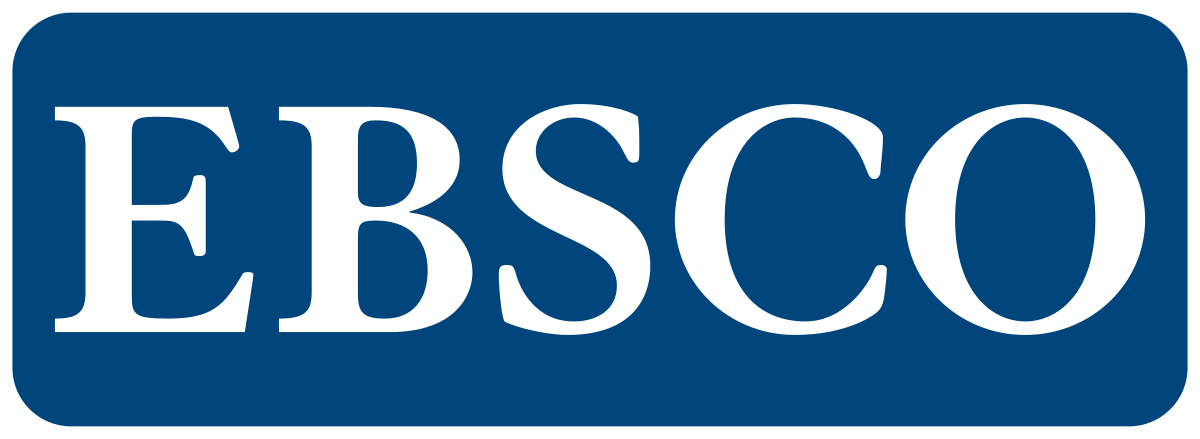Gastropod Diversity as a Bioindicator of the Heavy Metal Iron (Fe) Around the East Coast River of Surabaya
DOI:
https://doi.org/10.23960/jtep-l.v14i2.467-472 Abstract View: 179
Abstract View: 179
Abstract
Surabaya is a large city with a high number of industries and population density, so there is potential for heavy metal iron (Fe) pollution which affects environmental quality and the sustainability of aquatic living creatures. Gastropods are one of the macrofauna that have difficulty moving from place to place, so their presence is a bioindicator of an area with heavy metal Iron (Fe) pollution. Gastropod sampling was carried out using the transect sampling method with sampling locations spread across three locations, namely around the Kebon Agung River, Tambak Oso River and Jagir River. The diversity index was calculated using the Shannon-Wiener diversity index. The concentration of iron (Fe) metal pollutants was analyzed using AAS (Atomic Absoption Spectrophotometer). The relationship between heavy metal Fe accumulation and gastropods was analyzed using the Pearson correlation test. The research results showed that there were 14 types of gastropods with a medium diversity index (H') with values between 1.34-2.03 and an accumulation of the heavy metal iron 35994.7-44986.3 (ppm).
Keywords: Abundance, Diversity Index, Gastropods, Heavy metal iron (Fe), Surabaya East Coast River.
Downloads
References
Adelina, M., Harianto, S.P., & Nurcahyani, N. (2016). Keanekaragaman jenis burung di hutan rakyat Pekon Kelungu Kecamatan Kotaagung Kabupaten Tanggamus. Jurnal Sylva Lestari, 4(2), 51–60. https://doi.org/10.23960/jsl2451-60
Ayu, D., Nugroho, A., & Rahmawati, R. (2015). Keanekaragaman gastropoda sebagai bioindikator pencemaran lindi TPA Jatibarang di Sungai Kreo Kota Semarang. Seminar Nasional XII Pendidikan Biologi FKIP UNS 2015 (p. 700–707).
Diana, S., Hamdhani, H., & Eryati, R. (2024). Diversity of aquatic insects in water hyacinth (Eichhornia crassipes) leaf litter in aquaculture experiment ponds. Nusantara Tropical Fisheries Science, 3(1), 44-48.
Khairuddin, Yamin, M., & Syukur, A. (2018). Analisis kandungan logam berat pada tumbuhan mangrove sebagai bioindikator di Teluk Bima. Jurnal Biologi Tropis, 18(1), 69–79. https://doi.org/10.29303/jbt.v18i1.731
Kumar, A., Anju, T., Archa, V., Warrier, V.P., Kumar, S., Goud, G.S., Kashyap, A.K., Singh, S., Komal, K., Singh, P., Kumar, R., Sharma, S., Radhakrishnan, A.M., & Ramchiary, N. (2022). Mangrove forests: Distribution, species diversity, roles, threats and conservation strategies. In Sharma, S., & Singh, P. (editors), Wetlands Conservation: Current Challenges and Future Strategies. John Wiley & Sons: 229-271.
Mahfud, Widianingsih, & Hartati, R. (2013). Komposisi dan kelimpahan makrozoobenthos Polychaeta di Pantai Maron dan Sungai Tapak Kel. Tugurejo Kec. Tugu Kota Semarang. Journal of Marine Research, 2(1), 134–142.
Mustafa, M., Maulana, A., Irfan, U.R., & Tonggiroh, A. (2022). Evaluasi kesuburan tanah pada lahan pasca tambang nikel laterit Sulawesi Tenggara. Jurnal Ilmu Alam dan Lingkungan, 13(1), 52–56.
Odum, E.P. (1971). Fundamentals of Ecology. 3rd edition, W.B. Saunders Co., Philadelphia, 574 p.
Pusparani, S. (2018). Karakterisasi sifat fisik dan kimia pada tanah sulfat masam di lahan pasang surut. Jurnal Hexagro, 2(1).
Putri, A.D.N. (2013). Analisis Kandungan Besi Di Badan Air dan Sedimen Sungai Surabaya. [Diploma Thesis]. Universitas Negeri Malang.
Rachmawati, R., Yona, D., & Dyah Kasitowati, R. (2018). Potensi mangrove Avicennia alba sebagai agen fitoremediasi timbal (Pb) dan tembaga (Cu) di perairan Wonorejo. Jurnal Ilmu-ilmu Perairan, Pesisir dan Perikanan, 7(3), 227–236. https://doi.org/10.13170/depik.7.3.10555
Rahim, S., & Baderan, D.W.K. (2019). Komposisi jenis, struktur komunitas, dan keanekaragaman mangrove asosiasi Langge Kabupaten Gorontalo Utara - Provinsi Gorontalo. Jurnal Ilmu Lingkungan, 17(1), 181-189. https://doi.org/10.14710/jil.17.1.
-188
Romadhon, R.P., & Mahmiah, R. (2017). Inovasi hasil riset dan teknologi dalam akumulasi logam berat Cr 6+ pada air di perairan Wonorejo Surabaya. In Prosiding Seminar Nasional Kelautan XII Fakultas Teknik dan Ilmu Kelautan Universitas Hang Tuah, Surabaya: 20 Juli 2017 (hal. B 86–B 93).
Salim, A.G., Siringoringo, H.H., & Narendra, B.H. (2016). Pengaruh penutupan mangrove terhadap perubahan garis pantai dan intrusi air laut di hilir DAS Ciasem dan DAS Cipunegara, Kabupaten Subang. Jurnal Manusia dan Lingkungan, 23(3), 319–326. https://doi.org/10.22146/jml.18805
Sari, A., Aritonang, A. B., & Helena, S. (2020). Kelimpahan dan keanekaragaman gastropoda di kawasan mangrove Desa Bakau Besar Laut Kabupaten Mempawah. Jurnal Laut Khatulistiwa, 3(3), 97–104. https://doi.org/10.26418/lkuntan.v3i3.42918
Silitonga, M.F., Pramonowibowo, & Hartoko, A. (2014). Analisa sebaran bagan tancap dan hasil tangkapan di perairan Bandengan, Jepara, Jawa Tengah. Journal of Fisheries Resources Utilization Management and Technology, 3(2), 77-84.
Sriwahjuningsih, Hernawan, H., & Fitri, N. (2022). Indeks ekologi gastropoda sebagai bioindikator pencemaran air di Ekowisata Situ Bagendit Kecamatan Banyuresmi Kabupaten Garut. Jurnal Cahaya Mandalika, 3(1), 33–43. https://doi.org/10.36312/jcm.v3i1.554
Supriadi, Romadhon, A., & Farid, A. (2015). Struktur komunitas mangrove di Desa Martajasah Kabupaten Bangkalan. Jurnal Kelautan, 8(1), 44–51.
Wulansari, D.F., & Kuntjoro, S. (2018). Keanekaragaman gastropoda dan peranannya sebagai bioindikator logam berat timbal (Pb) di Pantai Kenjeran, Kecamatan Bulak, Kota Surabaya. Lentera Bio, 7(3), 242–247
Downloads
Published
How to Cite
Issue
Section
License
Authors who publish with this journal agree to the following terms:
Authors retain copyright and grant the journal right of first publication with the work simultaneously licensed under a Creative Commons Attribution-ShareAlike 4.0 International Lice that allows others to share the work with an acknowledgement of the work's authorship and initial publication in this journal.
Authors are able to enter into separate, additional contractual arrangements for the non-exclusive distribution of the journal's published version of the work (e.g., post it to an institutional repository or publish it in a book), with an acknowledgement of its initial publication in this journal.
Authors are permitted and encouraged to post their work online (e.g., in institutional repositories or on their website) prior to and during the submission process, as it can lead to productive exchanges, as well as earlier and greater citation of published work (See The Effect of Open Access).
Jurnal Teknik Pertanian Lampung

JTEPL is licensed under a Creative Commons Attribution-ShareAlike 4.0 International License.













